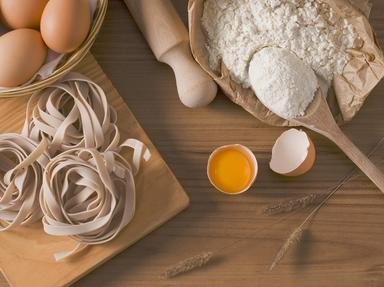
Not Your Momma's Seed Cake Trivia Quiz
Traditionally British And Very Delicious
Seed cake is very traditional and goes way back in British history. This teatime favorite was often included in any "good" Victorian cookery books. Let's go back even further and have some fun filling in the missing words in this 18th century recipe.
by sally0malley.
Estimated time: 3 mins.
- Home
- »
- Quizzes
- »
- Hobbies Trivia
- »
- Cooking and Baking
- »
- Cakes